Nationality Italian Occupation Architect | Name Luigi Moretti Role Architect | |
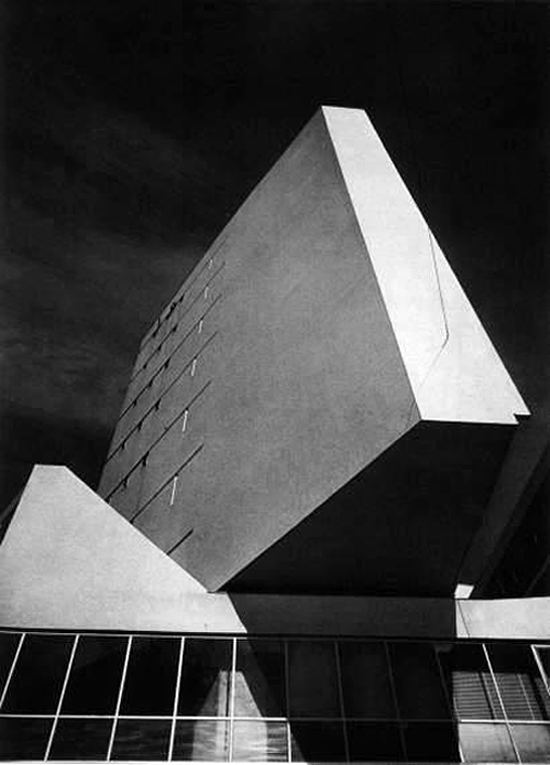 | ||
Awards Antonio Feltrinelli Prize, 1968 Buildings Fencing academy at Foro Italico, RomeTour de la Bourse, Montreal, with Pier Luigi NerviWatergate complex, Washington Structures Watergate complex, Tour de la Bourse, Hotel El‑Aurassi | ||
Luigi moretti 1907 1973 federico bucci
Luigi Walter Moretti (2 January 1907 – 14 July 1973) was an Italian architect.
Contents
- Luigi moretti 1907 1973 federico bucci
- Iliosbooks 3 luigi moretti casa delle armi in mussolini forum 1933 1937 isbn9788890345623
- Education and academic career
- Activity in building and urban development
- The postwar period
- Not only architecture
- The SGI and IRMOU
- The latest works
- References

Iliosbooks 3 luigi moretti casa delle armi in mussolini forum 1933 1937 isbn9788890345623
Education and academic career
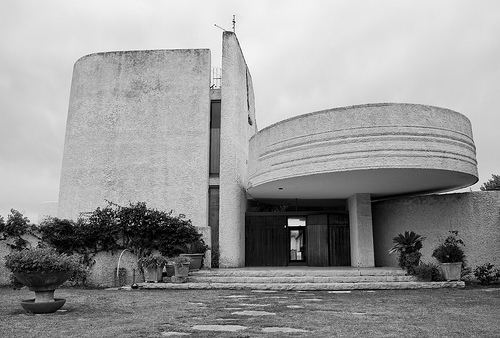
He was born in via Napoleone III, on the Esquiline Hill, in the same apartment where he lived almost his entire life. He was the natural son of the architect Luigi Rolland, whose most important work is the cinema-theater Adriano, and Maria Giuseppina Moretti He attended primary and secondary school at San Giuseppe De Merode boarding school and from 1925 he studied at the Royal School of Architecture in Rome. In 1929, Moretti graduated with honors, with a project for a college of higher education Rocca di Papa, where he won the Giuseppe Valadier award.
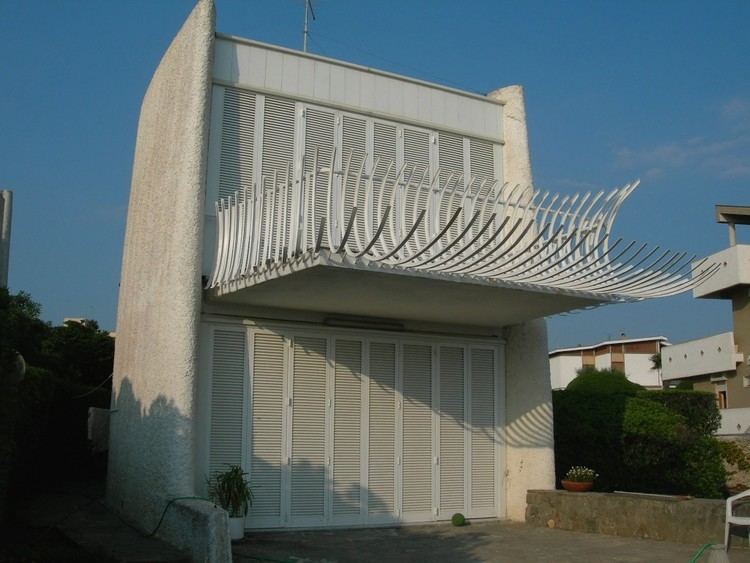
After degree, in 1931 he won a three-year scholarship for Roman Studies, established by the Governorate of Rome and the Royal School of Architecture. With this grant he worked with Corrado Ricci, in the arrangement of the areas east and north of Trajan's Market. In these years he also worked as assistant for the professorships of Vincenzo Fasolo (architect of Mamiani Lyceum and Duca d'Aosta Bridge, both in Rome) and Gustavo Giovannoni, at the restoration chair.
Activity in building and urban development
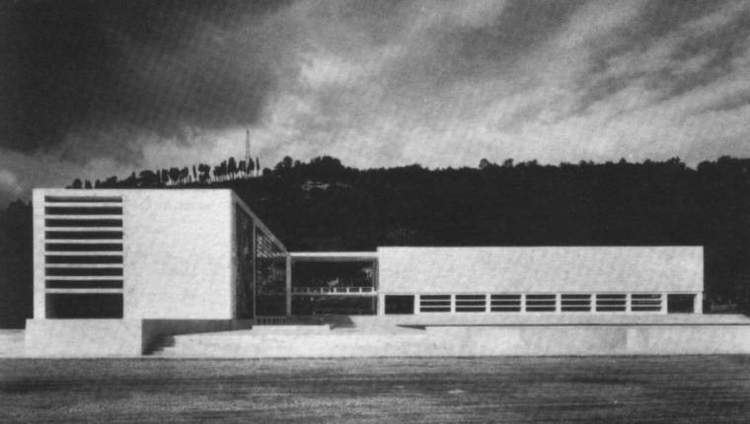
In 1932, Moretti entered in competitions for the town planning of Verona, Perugia, and Faenza, for which he obtained the second place. He also entered in a competition for a council house complex in Naples.
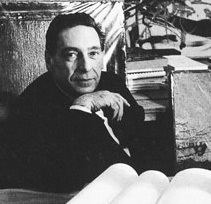
The next year, after ending the university career, with Giulio Pediconi, Mario Paniconi e Mario Tufaroli, attended at the fifth Triennale di Milano with a project for a country house designed for a scholar. In this year he also met Renato Ricci, at that time president of the Opera Nazionale Balilla, that, the following year, appointed Moretti ONB technical director, succeeding to Enrico Del Debbio. In this role Moretti designed some of the youth centres of Opera Nazional Balilla and Gioventù Italiana del Littorio: in 1933 in Piacenza and in Rome, Trastevere, in 1934 in Trecate, in 1935 a women centre in Piacenza and in 1937 another youth centre in Urbino.
In 1937 he took over, the design of the regulatory plan of the Foro Mussolini (renamed Foro Italico after the war), where he created some of his masterpieces, such as the Academy of fencing and the Duce's Gym (both 1936) and the commemoration cell (of 1940).
His are also the major planner of the Forum, enriched in the 1937 with the square of the Empire and the Stadium of Cypresses (expanded in 1953 and 1990 of other architects to become the Stadio Olimpico).
Moretti's works were published in the journal Architecture.
In those years he participated in the competition for the construction of the Palazzo Littorio, a project harshly criticized by the magazine Casabella and progressive Italian architectural culture in general.
In 1938 he participated in the design of the E42, or EUR, Esposizione Universale Romana (standing for Rome World's fair) and won (with Fariello, Muratori and Quaroni) the competition for the design of the Imperial Square (now square Guglielmo Marconi). The large building fronting the square was never realized, but in the postwar structures already executed were used for the "skyscraper Italy" by Luigi Mattioni.
He served in that period, in private practice, thanks mainly to his friendships with members of the Fascism and journalists.
In the period between 1942 and 1945 Moretti disappeared from public view, to reappear in 1945, when arrested for his collaboration with fascism, was briefly imprisoned in the prison of San Victor, where he met count Adolfo Fossataro. After release, with him in November of the same year, founded Cofimprese company.
The postwar period
With Cofimprese, he worked to develop house-hotel buildings. The original plan was for 20 hotels which only three were built and made, before breaking up in 1949. Also in Milan for Cofimprese, designed the complex between Corso Italia and Via Rugabella
The house Il Girasole ("The Sunflower") designed in 1949, and built in Rome in viale Bruno Buozzi (near via Parioli) in 1950, is one of the best known projects of the period, and is considered an early example of postmodern architecture. The building is also mentioned in the essay by Robert Venturi, Complexity and Contradiction in architecture, as an example of ambiguous architecture, poised between tradition and innovation. According to Swiss architectural theorist Stanislaus von Moos, the Vanna Venturi House, one of Venturi's masterpiece, in its broken pediments recalls the 'duality' of the facade of Luigi Moretti's apartment house on the Via Parioli in Rome.
Then Moretti designed villas for illustrious patrons, including La Villa Saracena in Santa Marinella for the former director of the Rome newspaper Il Messaggero, Francesco Malgeri.
Not only architecture
In 1950, he founded the magazine Space, Review of Arts and Architecture (published until 1953) to find a connection between different forms of art (from architecture to sculpture, from painting to film and theater), not by chance that the first issue began with an essay titled "Eclecticism and units of language". The journal was managed and written almost entirely by the Roman architect who made it come together in the results of his research and study on it wise public key, such abstract forms in the sculpture Baroque, discontinuity of space in Caravaggio and structures and sequences of spaces. Moretti was editorial director and editor. The magazine, printed in Milan, first by the printers E. Barigazzi, then by Lucini, was short-lived, with limited output of only seven numbers. In the decades after he released sporadically Moretti numbers, mostly monographs, in the magazine. In 1959, he released an issue dedicated to the sculptor Pietro De Laurentiis. In April 1963 published on the Space Structure of the essay collections and 1964 contemporary meaning of the wise words "architecture". And July 1968, an issue appeared in the essay Capogrossi dedicated to the famous Roman painter.
It was in 1954, when Moretti decided to found an art gallery, also known as space, in Rome. Moretti was also a close associate of the art critic and theorist Michel Tapié, with whom in 1960 Moretti co-founded the International Center of Aesthetic Research in Turin, Italy, an institution that lasted until 1987, after the death of Tapié.
Moretti's interest in art is also evident from the tendency to collect works, particularly of the 17th century (Seicento) and antiquity.
The SGI and IRMOU
In 1957, he became a consultant of the Società Generale Immobiliare ( SGI ) for which he designed, among other things, the buildings at the head of the EUR. In the same year he collaborated with the Municipality of Rome and the Ministry of Public Works, working on projects for inter-municipal plan of Rome (never adopted) and the Archaeological Park, from which arose the controversy with Bruno Zevi and Espresso on the devastation of Appia.
Also in 1957, he founded the Institute for Operations Research and Applied Mathematics Urbanism (IRMOU) with the express purpose of continuing studies on the so-called parametric architecture, a doctrine which drew on the application of mathematical theories in the design planning. He studied new dimensional relationships in architectural space and Urban area, relating to the design of the Built Environment, with mathematical analysis, like Le Corbusier had studied the Modulor and the golden ratio. These studies were represented in 1960 with huge éclat in the press, at the XIII Triennale di Milano.
In 1958, he later went on to design major residential neighborhoods, including the CEP of Livorno in that year also participated in the project of the Olympic Village designed for the XVII Olympiad scheduled in Rome in 1960. The design of the village in 1961 won the Prix IN / ARCH 1961 for the best achievement in the region Ontario. On the same urban-design director is the Tenth District of Rome, partly realized between 1960 and 1966 on behalf of Incisa.
In this period Moretti had a significant influence on the work of the urban plan of Rome, which will be adopted by the City Council on 18 December 1962.
The latest works
In 1962, on behalf of General Real Estate, he designed the Watergate complex (that gave its name to the political scandal of the same name, in the United States of America in 1972) in Washington, and also the Stock Exchange Tower, Tour de la Bourse in Montreal.
In 1963, he again won the award / ARCH for best achievement in the Lazio region with the study design of two twin buildings in the EUR. In 1964, he won the Medal for meritorious school, culture and art was awarded, by President Antonio Segni.
In 1965, he began a fruitful relationship with the Consulting Group Le Condotte (later merged with Italstat), taking care of the design and implementation of resettlement Thermal Boniface VIII Fiuggi, the Metropolitana di Roma in the trunk by the Termini station to Via Ottaviano in Prati, opened in 1980. As part of the work on the underground in Rome, designed the current automobile and underground bridge open in 1972, named Pietro Nenni. Another work is the underground parking for two thousand places in Villa Borghese, which opened in 1973.
He worked with Charles Conrad producing a biopic film about Michelangelo Buonarroti who received the Venice Biennale Art Film award from the biographies found on the site of the Polytechnic Bari.
In 1968, he won the Antonio Feltrinelli Prize's Accademia Nazionale dei Lincei and got the task of designing a Tagbha sanctuary on Lake Tiberias. The project was approved by the Holy See but the work was not started because of the delicate situation between Israel and Palestinians which soon erupted into war. In that year also he married Maria Teresa Albani.
The following year, in 1969 found a fertile market for jobs in Arab countries, especially in Kuwait (where he designed the headquarters Bedouin Engineering Club and Houses) and Algeria (Hotel El-Aurassi and Complex Club des Pins, in addition to a number of schools and residential neighbourhoods).
In 1971, he designed new buildings, for building projects of General Real Estate, including the residential centre in Alexandria, Virginia on the Potomac River, and the Old residential Roquencourt (Paris), in Montreal, and the attachment to his previous realization of the 1961, the Torre (Stock Exchange Tower) Stock Exchange, a new skyscraper. He exhibited his works in a monographic exhibition at Madrid.
He died in 1973, due to heart failure while he was in the midst of his work.
